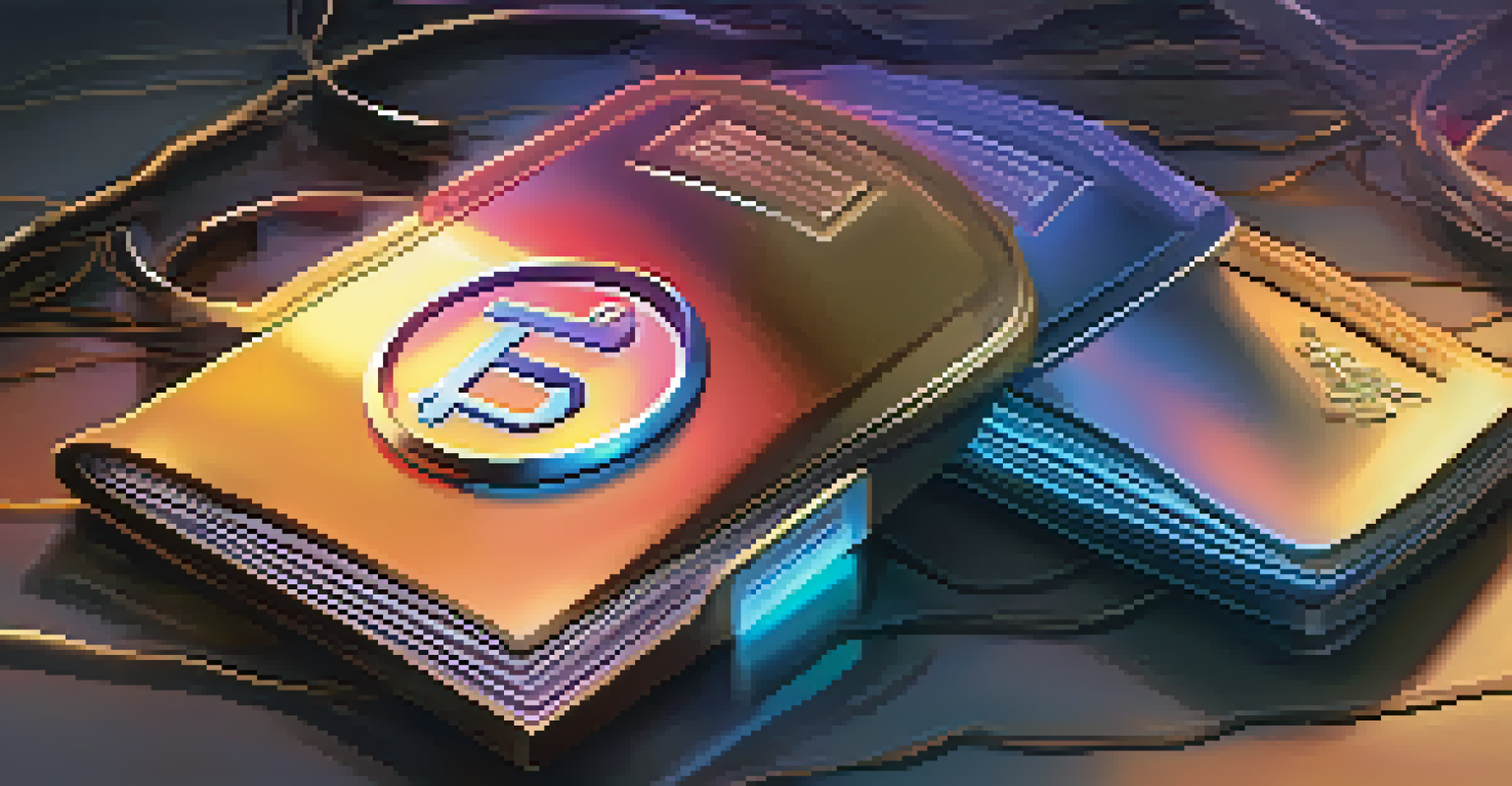Understanding the Basics of Ethereum Wallets and Their Uses

What is an Ethereum Wallet and Why Do You Need One?
An Ethereum wallet is a digital tool that allows you to store, send, and receive Ether (ETH) and other tokens on the Ethereum blockchain. Think of it like a bank account, but instead of dollars, you’re dealing with cryptocurrency. These wallets don’t actually hold your assets; they store the keys that give you access to your assets on the blockchain.
Not your keys, not your coins.
Without a wallet, you wouldn’t be able to interact with the Ethereum ecosystem, whether that means trading, using decentralized applications (dApps), or participating in smart contracts. Just as you'd need a bank account to manage your finances, an Ethereum wallet is essential for managing your digital assets.
Moreover, the security of your assets heavily depends on your wallet choice and how you manage your keys. So, understanding wallets is crucial for anyone looking to dive into the world of Ethereum.
Types of Ethereum Wallets: Which One is Right for You?
Ethereum wallets come in various forms, primarily categorized into hot wallets and cold wallets. Hot wallets are connected to the internet and are more user-friendly, making them a convenient choice for everyday transactions. Examples include mobile and web wallets, but remember, their online nature also makes them more vulnerable to hacks.

On the other hand, cold wallets, like hardware wallets, are offline storage solutions. They offer higher security by keeping your keys away from potential online threats. If you're planning to hold a significant amount of ETH, investing in a cold wallet might be wise to safeguard your assets.
Understanding Ethereum Wallets
An Ethereum wallet is essential for storing, sending, and receiving cryptocurrency, acting as your gateway to the Ethereum ecosystem.
Ultimately, your choice of wallet should align with your needs—if you’re a frequent trader, a hot wallet may be more suitable, while long-term holders often prefer the security of cold wallets.
How to Set Up Your First Ethereum Wallet
Setting up your first Ethereum wallet is a straightforward process, and you can start by choosing a wallet type that fits your needs. For example, if you opt for a hot wallet, you can simply download an app or create an account on a web-based wallet platform. The setup usually involves providing an email address and creating a password.
In this world, nothing can be said to be certain, except death and taxes.
If you choose a cold wallet, like a hardware wallet, you’ll need to purchase the device, follow the manufacturer's instructions to install the software, and generate your wallet. It’s crucial to write down your recovery phrase during this process, as it’s your only way to regain access if you lose your wallet.
Once your wallet is set up, you’ll receive your public address, which you can share for receiving ETH. However, always keep your private keys or recovery phrase safe and never share them—this is your key to accessing your funds.
Understanding Private and Public Keys in Ethereum Wallets
In the world of Ethereum wallets, understanding private and public keys is fundamental. Your public key is like your bank account number; it’s safe to share and is used by others to send you Ether. Conversely, your private key is akin to your ATM PIN; it must remain confidential as it grants access to your funds.
When you create a wallet, a pair of keys is generated. The public key is derived from the private key, but it’s nearly impossible to reverse-engineer the private key from the public one. This cryptographic relationship ensures your assets' security, as long as you keep your private key secure.
Types of Wallets Explained
Hot wallets offer convenience for everyday transactions, while cold wallets provide enhanced security for long-term storage of assets.
To put it simply, treat your private key with the utmost care. Losing it means losing access to your funds, while sharing it could lead to theft.
Using Your Ethereum Wallet for Transactions
Using your Ethereum wallet for transactions is as simple as sending an email—but with a few more security measures involved. To send ETH, you’ll need the recipient’s public address, which you can enter into your wallet app. You specify the amount and confirm the transaction, which is then processed on the Ethereum network.
Transactions on the Ethereum blockchain require a small fee called 'gas', which compensates miners for processing your transaction. The amount of gas can vary based on network congestion, so it’s wise to check the current rates before sending large amounts.
Once the transaction is confirmed, it’s recorded on the blockchain, making it immutable and transparent. This means you can always check the status of your transaction, providing peace of mind.
The Role of Ethereum Wallets in Decentralized Applications
Ethereum wallets are pivotal when it comes to interacting with decentralized applications (dApps). These applications, which run on the Ethereum blockchain, offer functionalities ranging from finance to gaming and social networking. Your wallet is essentially your gateway to accessing these dApps.
When you connect your wallet to a dApp, you can perform actions such as trading tokens, lending assets, or participating in governance. Each interaction often requires a transaction, which again involves gas fees, but the benefits of decentralized finance (DeFi) and more can be substantial.
Security Best Practices
Prioritizing security through strong passwords, two-factor authentication, and regular backups is crucial to protect your Ethereum wallet.
So, whether you're swapping tokens on a decentralized exchange or playing a blockchain-based game, your Ethereum wallet is the tool that enables these experiences and empowers you in the decentralized world.
Keeping Your Ethereum Wallet Secure: Best Practices
Security should be a top priority when managing your Ethereum wallet. Start by using strong, unique passwords and enabling two-factor authentication (2FA) if available. This adds an extra layer of security, making it harder for unauthorized users to access your wallet.
It’s also essential to regularly back up your wallet. This means securely storing your recovery phrase and any necessary files in a safe place, like an encrypted USB drive. If you ever need to restore your wallet, having these backups can save you from losing your funds.

Lastly, be cautious of phishing attempts and only use official wallet applications. Cybercriminals often create fake websites or apps to steal your information. Always double-check URLs and use trusted sources to ensure your assets remain safe.